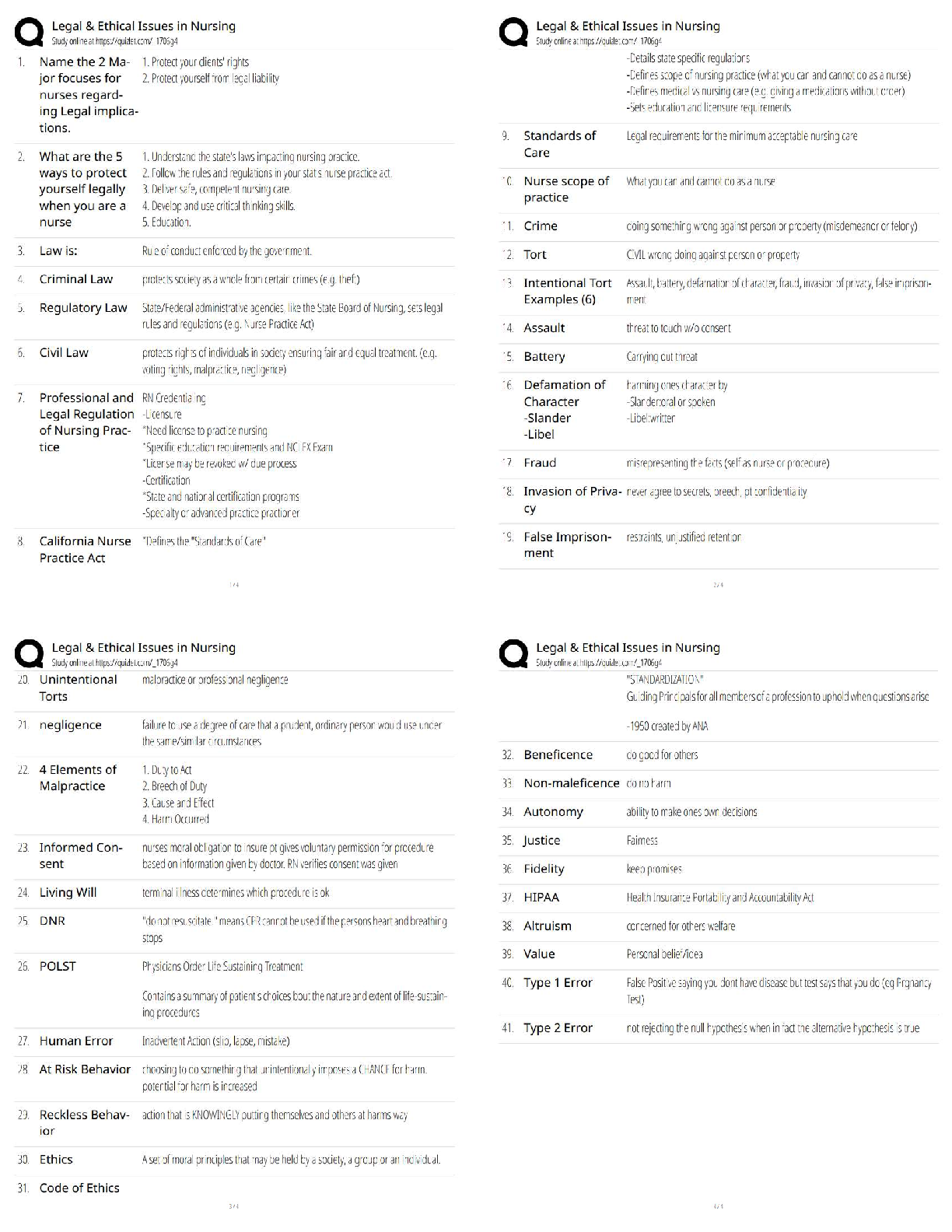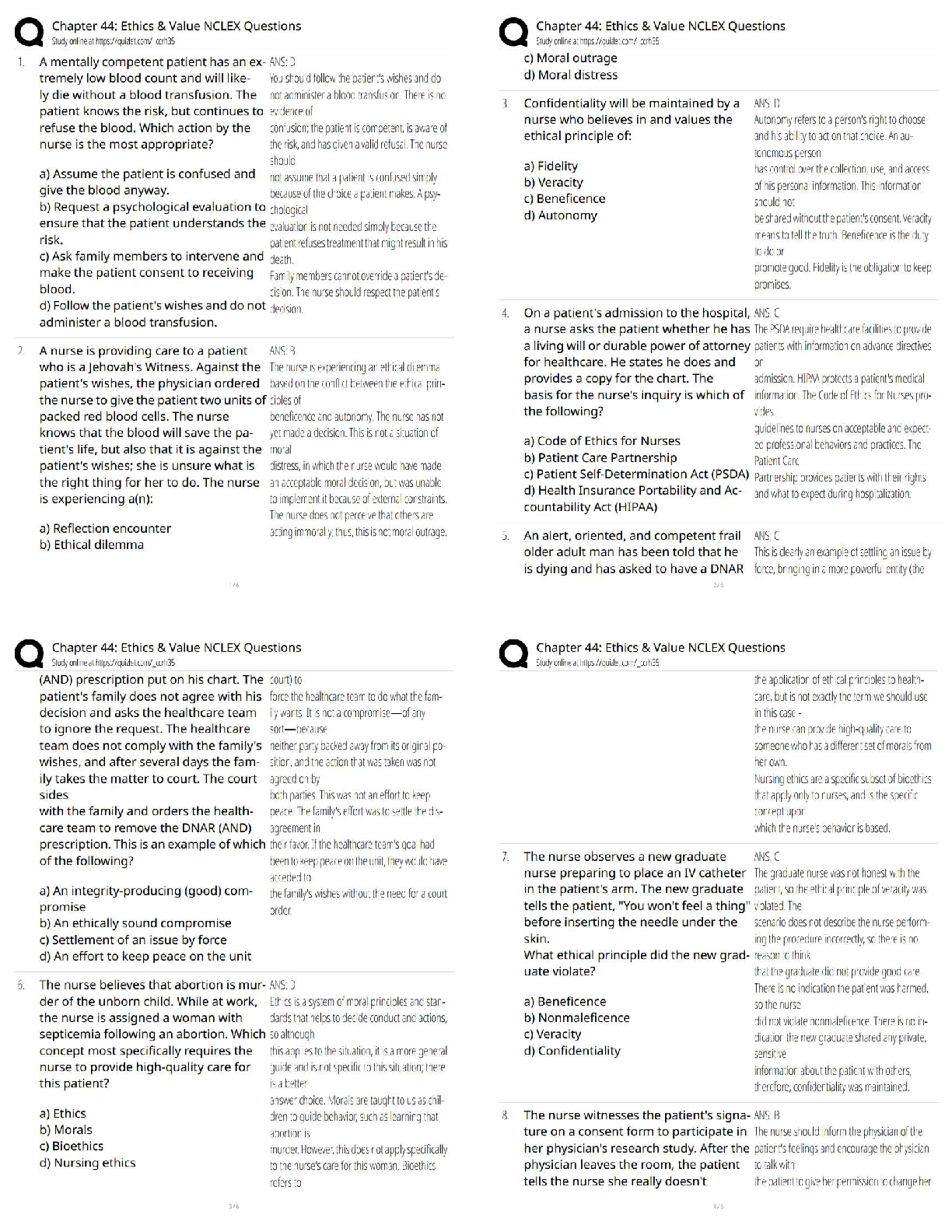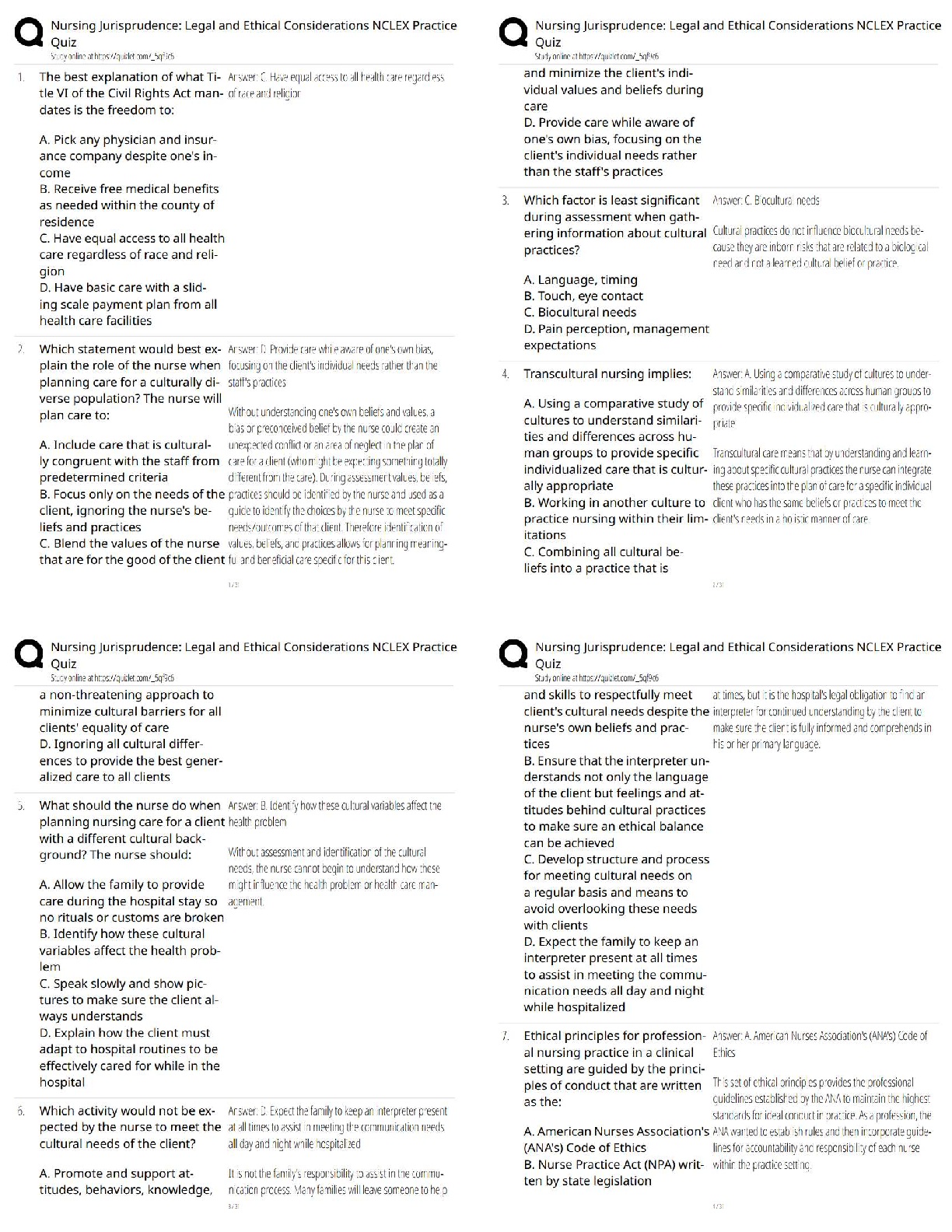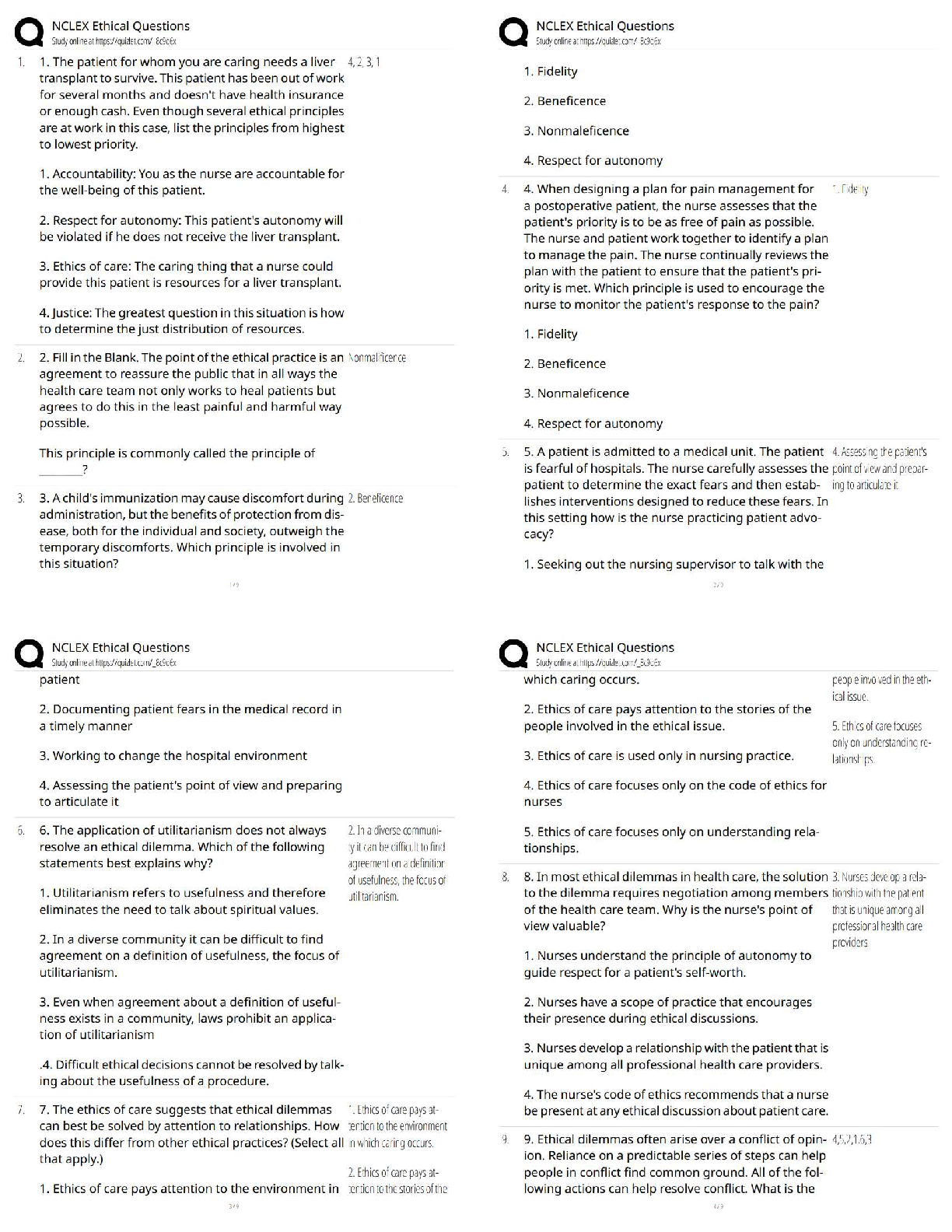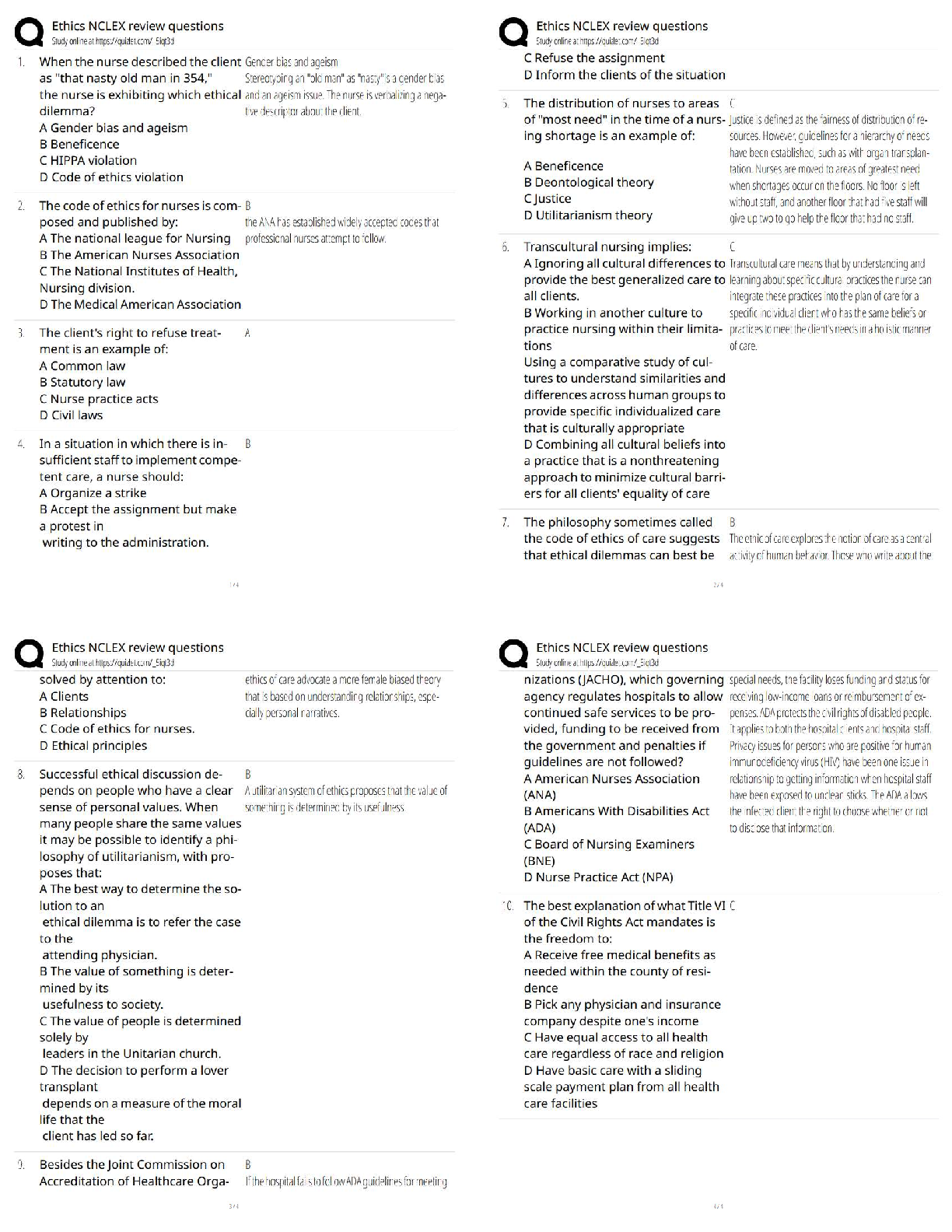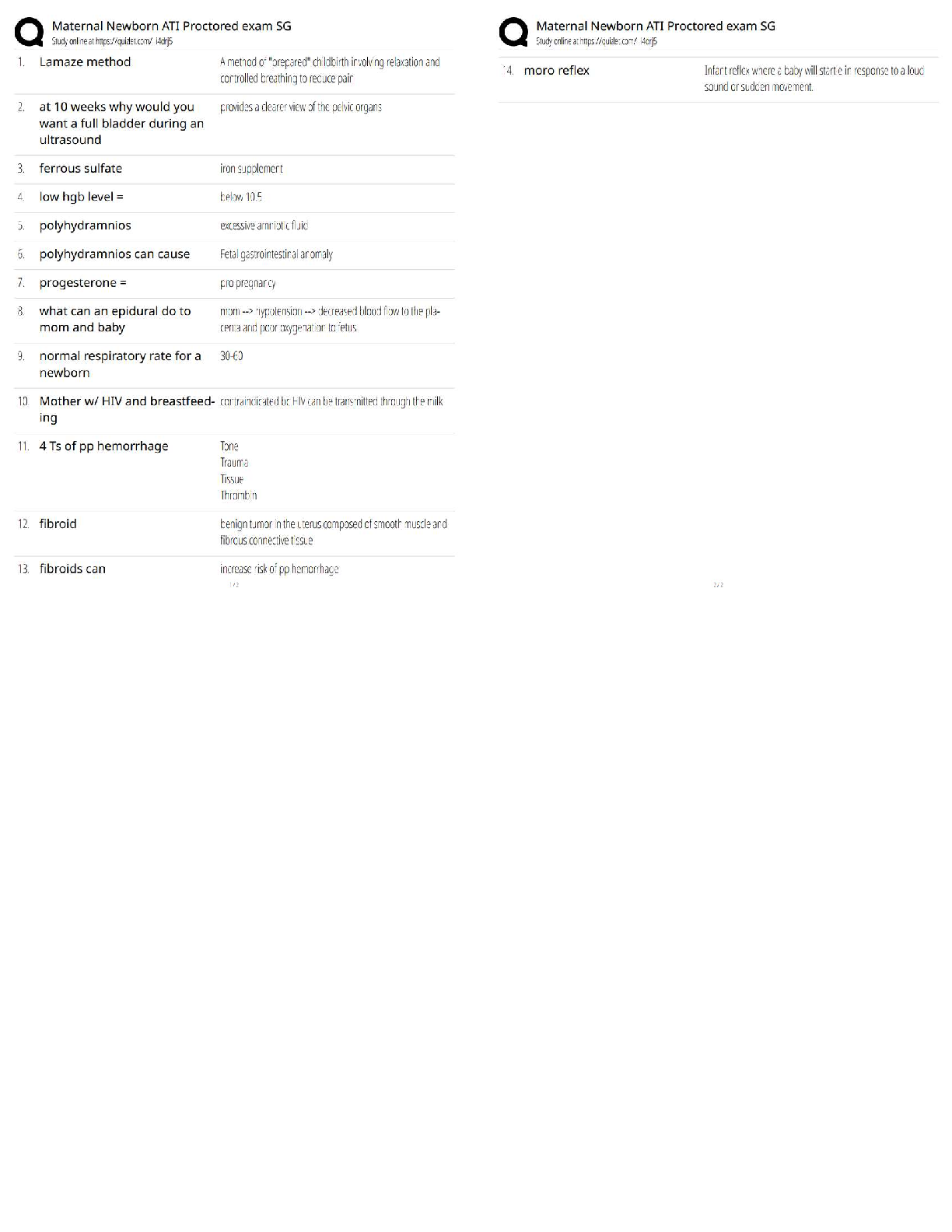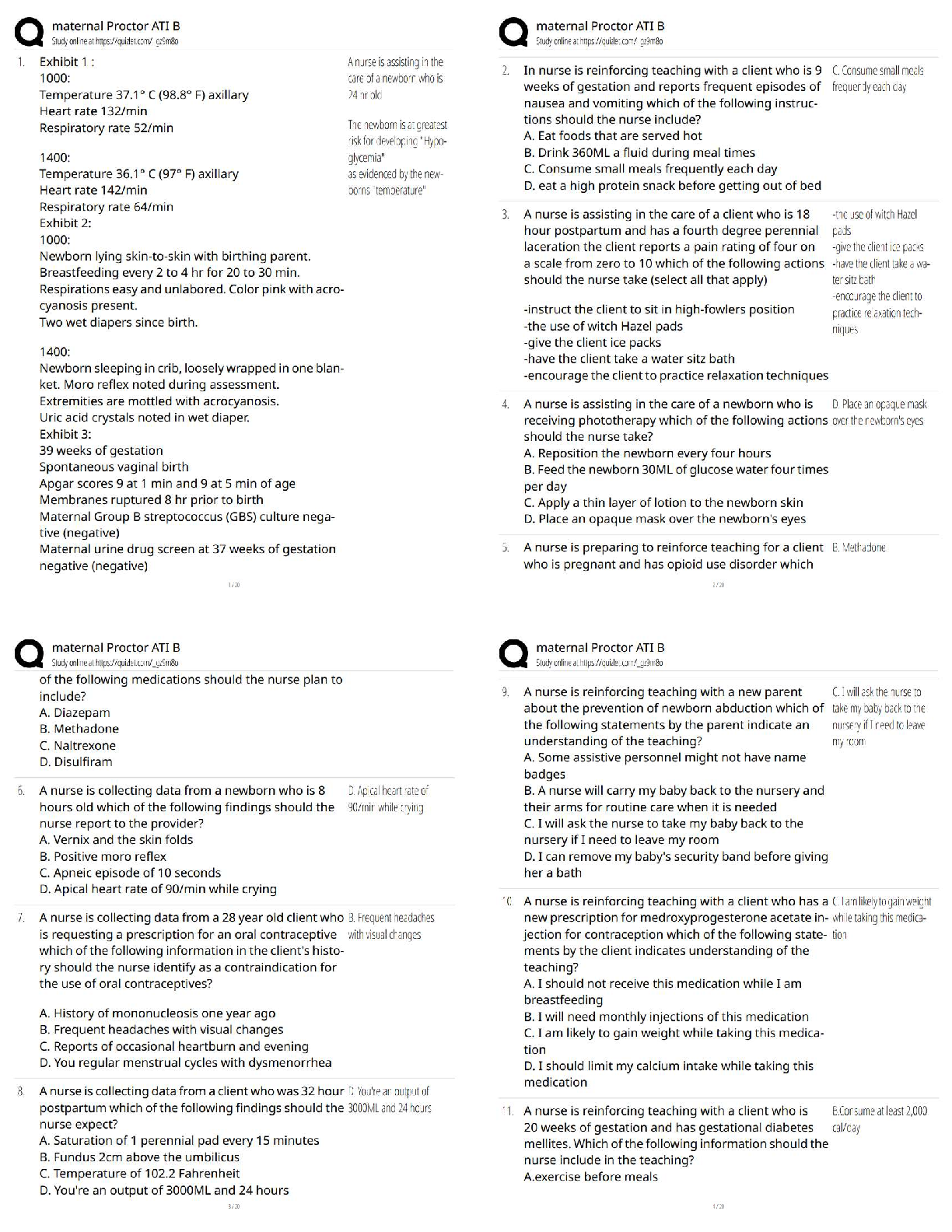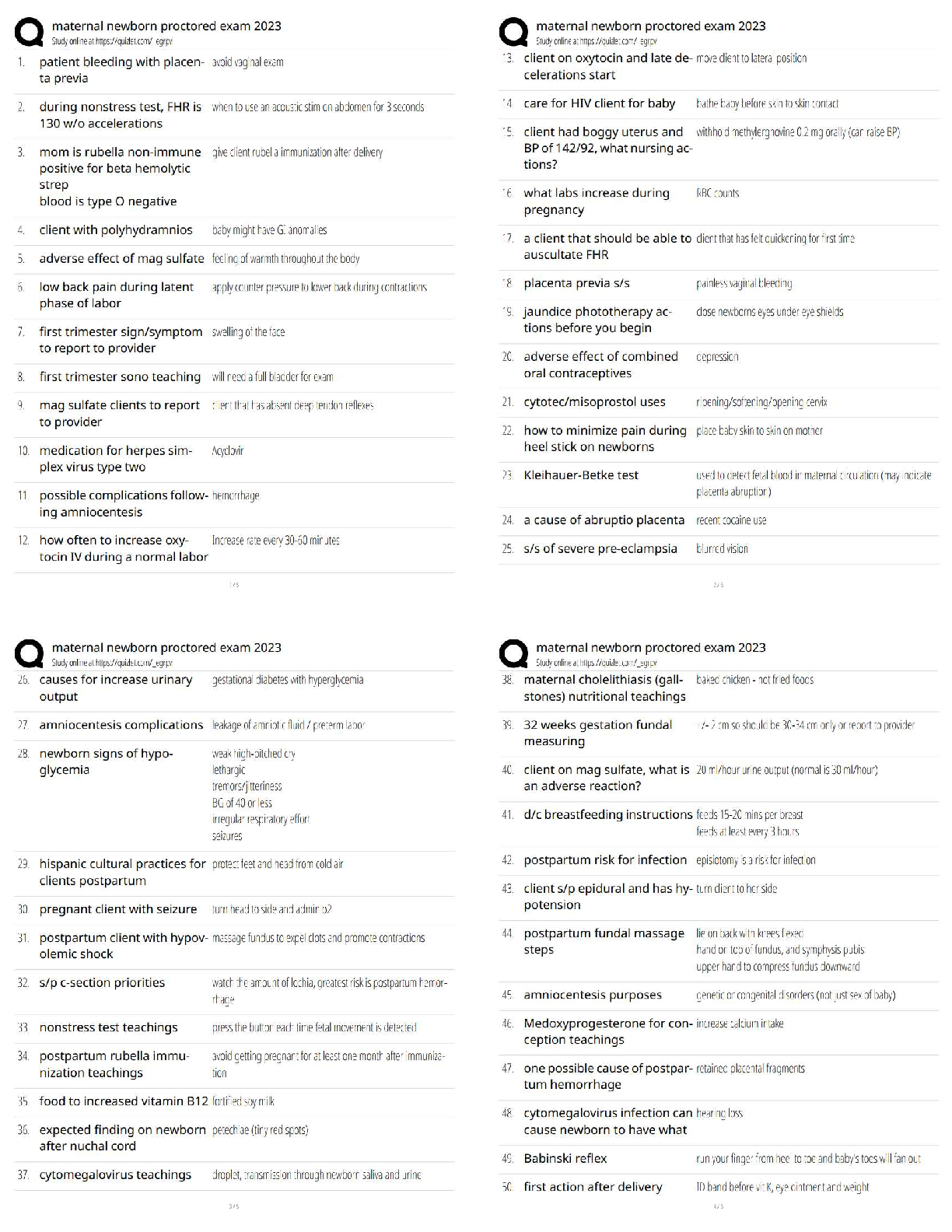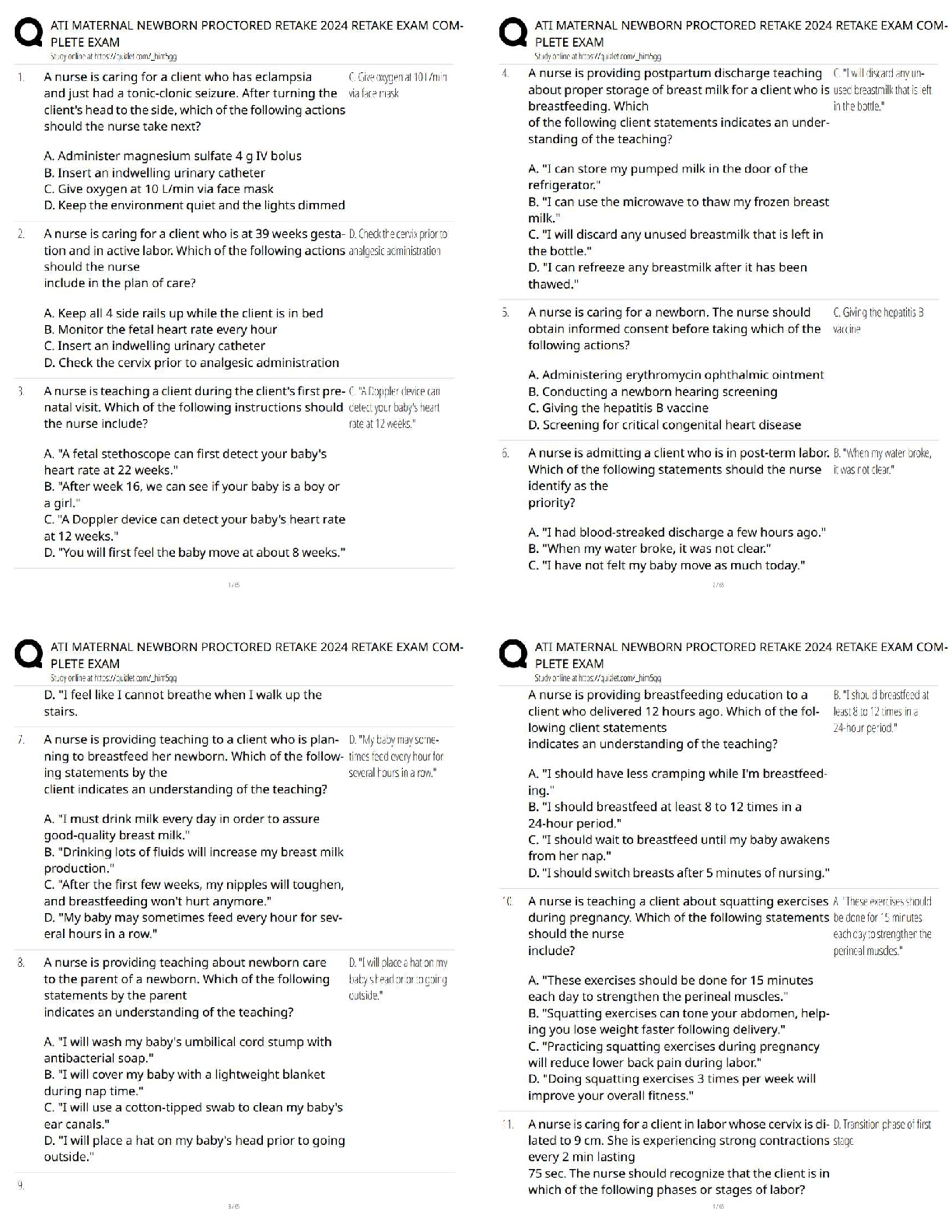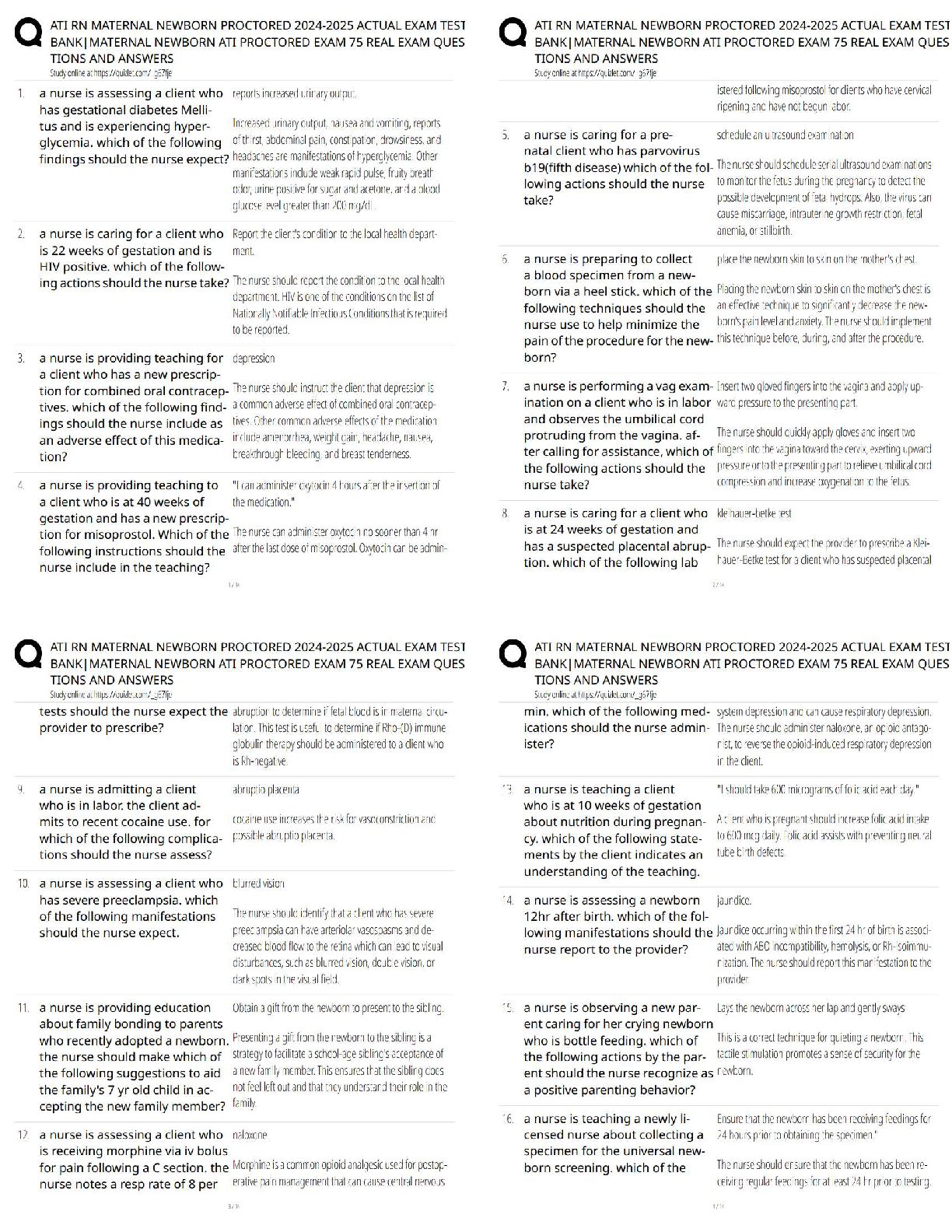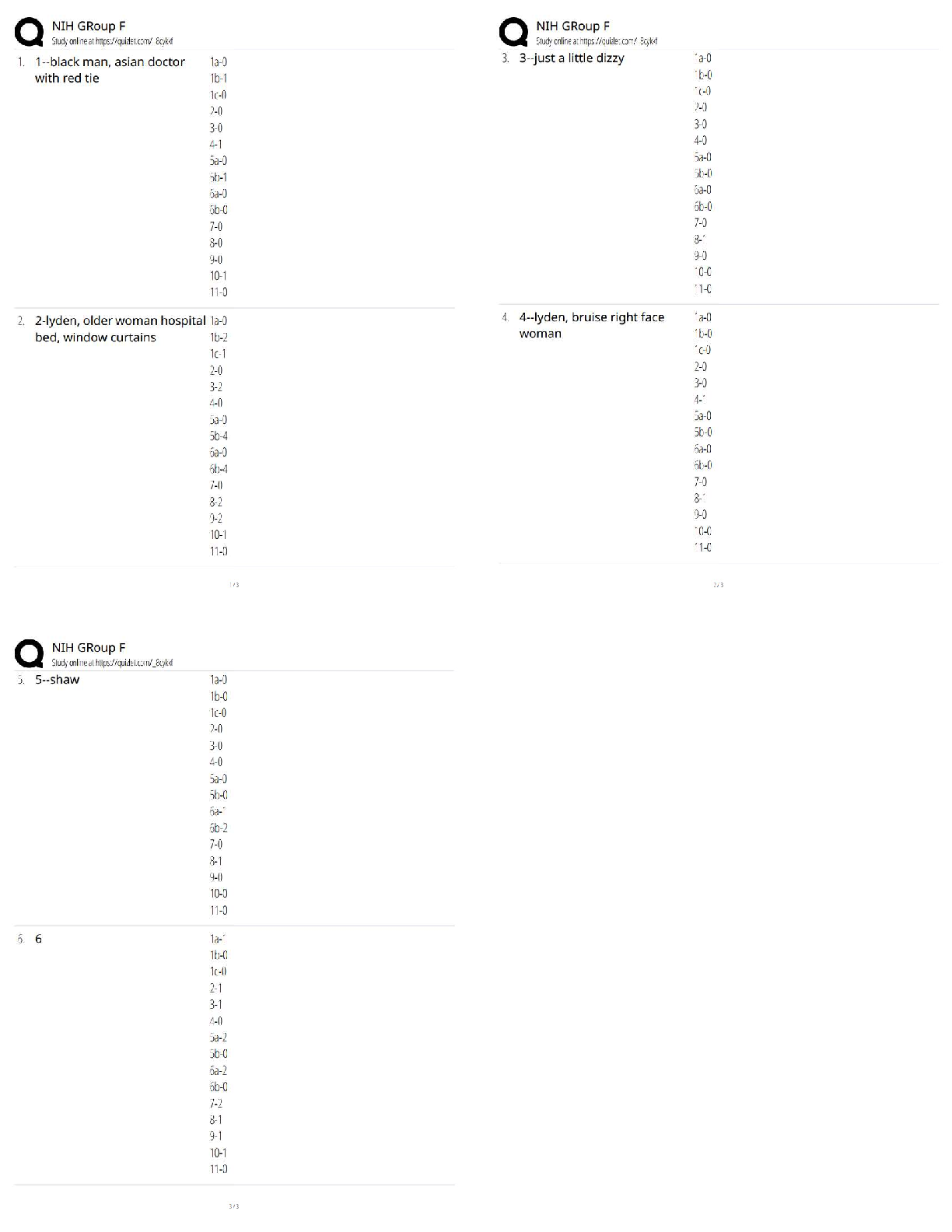Business > QUESTIONS & ANSWERS > MBUS 301 2020 Exam 2 review questions and answers docx 2020 solution devry university (All)
MBUS 301 2020 Exam 2 review questions and answers docx 2020 solution devry university
Document Content and Description Below
MBUS 301 2020 Exam 2 review questions and answers docx 2020 solution devry university 1. _____leadership gives purpose and meaning to organizations by anticipating and envisioning a viable future ... for the organization and working with others to initiate changes that create such a future. 2. The act of applying a valued consequence to increase a behavior is referred to as: 3. A(n) _________is a collection of people who interact to undertake a task but do not necessarily perform as a unit or achieve significant performance improvements. 4. In the context of sexual harassment laws in the U.S., which of the following is true? A. Cases of quid pro quo harassment violate Title VII of the Civil Rights Act of 1964, but instances of hostile environment does not. 5. Which of the following steps is a responsibility of the chief information officer? 6. The top management of a company determined that their end-of-year bonuses would not be given due to low sales. Sarah, a department manager, informed her staff that even high-performing employees should not expect a bonus. Sarah’s ______power was limited by the decision of the top management. 7. Which of the following is a characteristic of a traditional work environment? . 8. Instances of withdrawing or failing to provide a reinforcing consequence is referred to as: 9. The entire process of understanding and appreciating employee differences to build a more effective and profitable organization is known as: 10. Which of the following is true of a world-class organization? 11. Which of the following is a characteristic of a new team environment? 12. The theory proposing that people will behave based on their perceived likelihood that their effort will lead to a certain outcome and on how highly they value that outcome is known as: 13. According to the trait approach to leadership, a(n)___________leader overcomes obstacles, makes decisions despite uncertainty, and instills confidence in others. 14. A leadership perspective that attempts to identify what good leaders do – that is, what behaviors they exhibit, is known as the: 15. The ________________refers to the belief that things must be either A or B and cannot be both. 16. _______leadership seeks information, opinions, and preferences, sometimes to the point of meeting with the group, leading discussions, and using consensus or majority vote to make the final choice. 17. Clara, a new recruit at Blue International, was encouraged to join the official group of minority employees to discuss the challenges and opportunities at Blue International. Clara found the group to be helpful because the other group members were able to communicate to her the norms and culture of the organization. This, in turn, enabled her to adjust to the organization more quickly and effectively. This is an example of: 18. Valence is best defined as: 19. __________teams work toward a one-time product, disbanding once their work is completed. 20. ________is a systemwide application of behavioral science knowledge to develop, improve, and reinforce the strategies, structures, and processes that lead to organization effectiveness. 21. Grace was refused a job, in spite of the fact that she had all the required qualifications. The reason for this rejection was that she reacted negatively to an illicit comment on her dressing made by her interviewer. Based on the given information, it would be most accurate to say that Grace is a victim of: 22. _________teams are physically dispersed and communicate electronically more than face-to-face. 23. According to Maslow’s need hierarchy: 24. In the context of the research program conducted at the University of Michigan on the impact of leaders’ behavior on job performance, demonstrating trust and confidence, being friendly and considerate, showing appreciation, and keeping people informed is known as __________behavior. 25. ___________interventions, an organization development technique, include attracting good people, setting goals, and appraising and rewarding performance. 26. The leadership perspective that proposes that universally important traits and behaviors do not exist and that effective leadership behavior varies from circumstance to circumstance is known as the: 27. In _________teams, workers are trained to do all or most of the jobs in the unit, they have no immediate supervisor, and they make decisions previously made by first-line supervisors. 28. The _________model of leadership uses the basic situational approach of assessing the situation before determining the best leadership style. 29. Daphnie has recently been denied a promotion. This is the third time she was turned down, but “that’s just the way things go.” After this last disappointment, Daphnie took a good hard look at her company. She found that only two women candidates have been promoted to upper management positions, in the company’s entire history. Which of the following factors is most likely obstructing Daphnie’s career growth? 30. Alderfer’s ERG theory primarily focuses on: 31. Who developed force-field analysis? 32. A difference between Maslow’s need hierarchy and Alderfer’s ERG Theory is that: 33. In the ______________stage of team development, hostilities and conflict arise, and people jockey for positions of power and status. 34. Which of the following is the main reason behind the projected slowdown in the pace of growth of the labor force in the U.S. and other developed countries? 35. The rewards given to a person by the boss, the company, or some other person are known as: 36. Which of the following is most likely to help employers in preventing an exodus of talent and retaining skilled and knowledgeable older workers? 37. The act of changing a task to make it inherently more rewarding, motivating, and satisfying for the concerned people is referred to as: 38. In a __________leadership approach, the team leader seeks input from group members for decision, provides assignments and experiences to develop members’ skills and abilities, coordinates group effort, and the like. 39. In the context of Fiedler’s contingency model of leadership effectiveness, leadership styles were measured with an instrument assessing the leader’s _______. 40. In the context of Herzberg’s two-factor theory, characteristics of the workplace, such as company policies, working conditions, pay, and supervision, that can make people dissatisfied are referred to as: 41. A study by the Department of Labor’s Glass Ceiling Institute showed that the stock performance of firms that were high performers on diversity-related goals were ______that of other firms. __________occurs when a tightly knit group is so cooperative that agreeing with one another’s opinions and refraining from criticizing others’ ideas become norms. 42. _________is a style of dealing with conflict involving cooperation on behalf of the other party but not being assertive about one’s own interests. 43. The process of sharing power with employees, thereby enhancing their confidence in their ability to perform their jobs and their belief that they are influential contributors to the organization is known as: 44. A leader who has ______power has certain knowledge; people comply because they believe in, can learn from, or can otherwise gain from that knowledge. 45. The practice of using a fair process in decision making and making sure others know that the process was as fair as possible is referred to as: 47. Under which of the following conditions can social loafing be avoided? 48. For motivation to be high: 49. Companies with a reputation for providing opportunities for diverse employees are most likely to: 50. _________means anticipating and preparing for an uncertain future. [Show More]
Last updated: 3 years ago
Preview 1 out of 11 pages
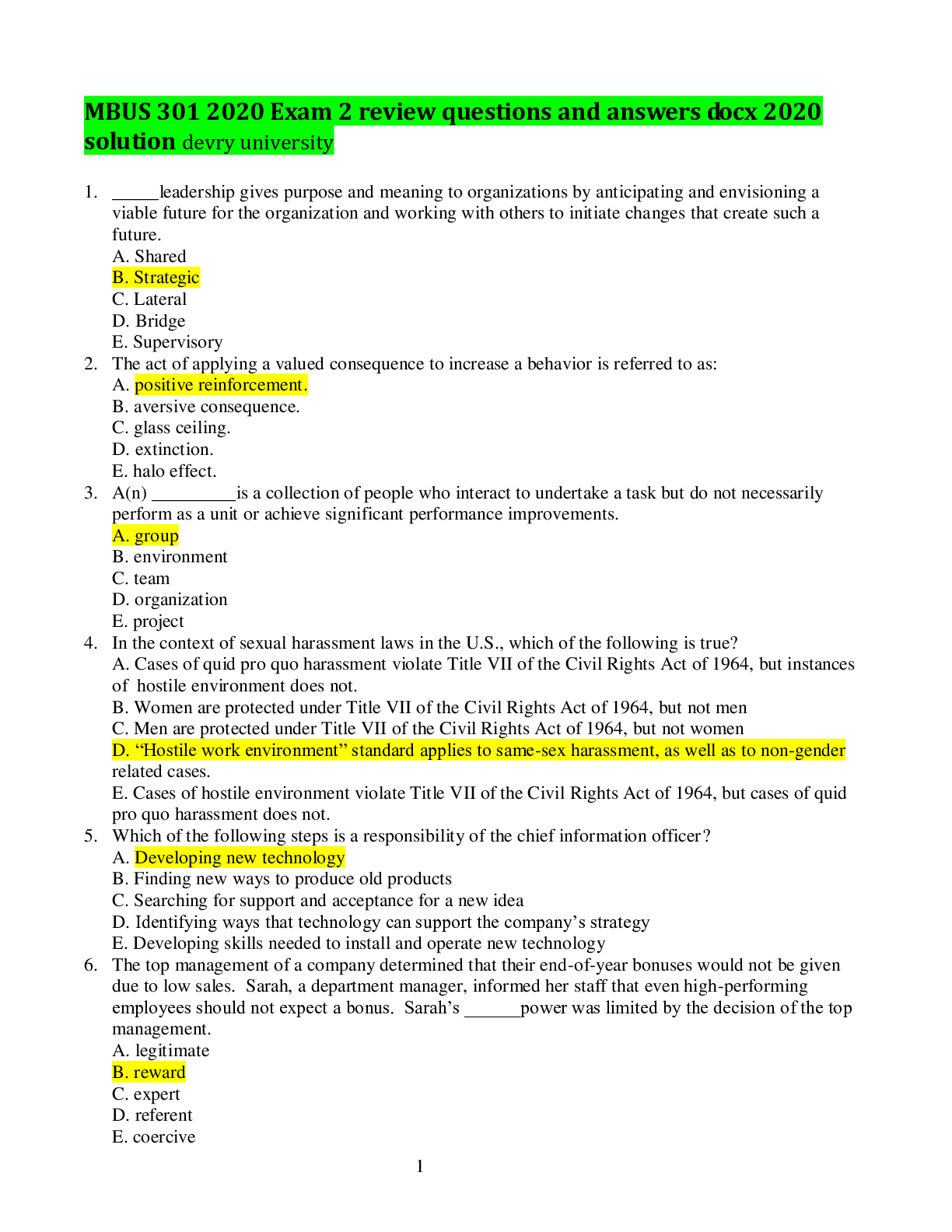
Buy this document to get the full access instantly
Instant Download Access after purchase
Buy NowInstant download
We Accept:

Reviews( 0 )
$15.00
Can't find what you want? Try our AI powered Search
Document information
Connected school, study & course
About the document
Uploaded On
Oct 15, 2020
Number of pages
11
Written in
All
Additional information
This document has been written for:
Uploaded
Oct 15, 2020
Downloads
0
Views
139

 answers.png)











